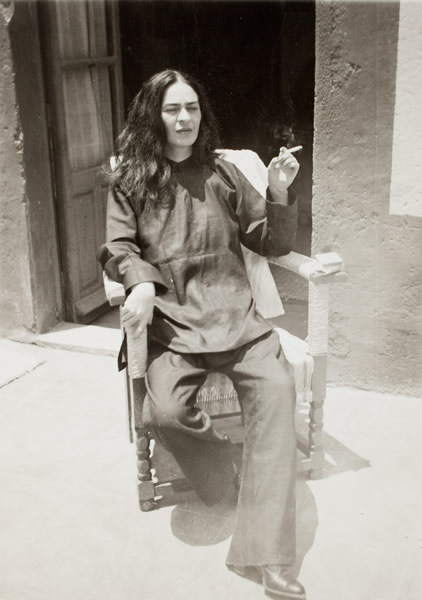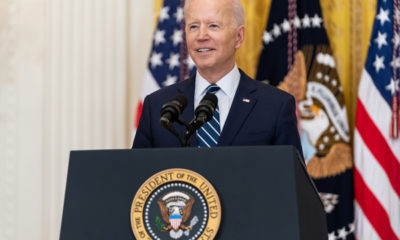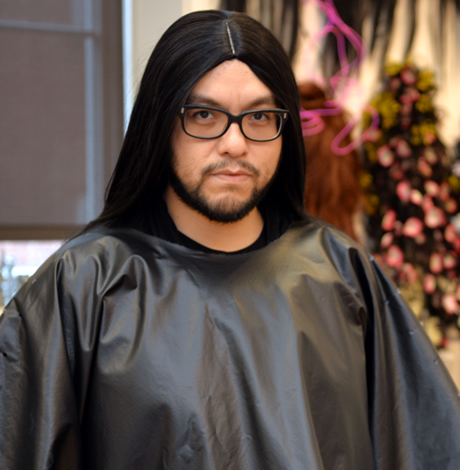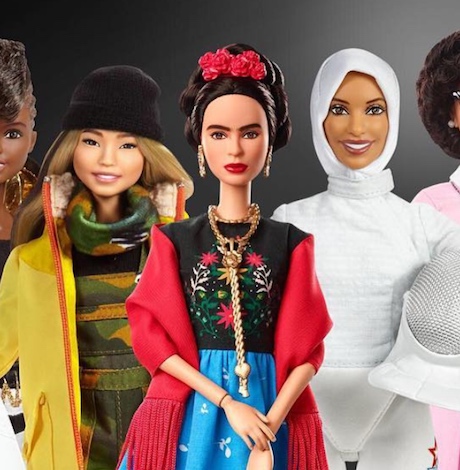Arts & Entertainment
Another side of a legend
Bi painter Kahlo’s photos displayed in new exhibit
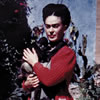
‘Frida Kahlo: Her Photos’
Artisphere
1101 Wilson Blvd.
Arlington, VA
Feb. 23-March 25
Fans of Frida Kahlo and students of photography in the D.C. area have a rare opportunity to see a collection of photographs that document and explore the fascinating life and rich legacy of this influential queer artist.
From Feb. 23 through March 25, Artisphere will be the only venue in the United States to show “Frida Kahlo: Her Photos,” an exhibition of personal photographs that have been hidden from public view since Kahlo’s death in 1954.
The extraordinary work of bisexual Mexican artist Frida Kahlo (1907-1954) is celebrated by a diverse group of dedicated fans. Best known for a series of stunning self-portraits that use costume and color to great effect, Kahlo is now seen as an important member of the surrealist movement. Artist André Breton hailed her work as a “ribbon around a bomb” and it’s admired in Mexico as an exploration of national and indigenous traditions. Feminists celebrate her painting as an uncompromising depiction of female bodies and lives and a powerful testament to her incredible strength in facing a life of chronic pain.
Writing in the online encyclopedia glbtq, queer cultural critic Tamsin Wilton also underscores the importance of Kahlo as a queer artist. During her long tempestuous marriage to famous activist and artist Diego Rivera, Kahlo had several affairs with both men and women. More artistically significant, however, is her bold use of costume to challenge traditional notions of female sexuality. Just as her depictions of ornate Mexican costumes were used to celebrate indigenous Amerindian culture, Wilton writes that Kahlo was often pictured in male attire to “make a statement about her own independence from feminine norms. She was a masterly and magical exponent of cross-dressing, deliberately using male ‘drag’ to project power and independence.”
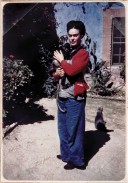 During her life, Kahlo created and collected more than 2,500 photographs from her international travels and from visitors to the house that she and Rivera shared. After Rivera’s death, in accordance with his will, this collection of snapshots was sealed and put in storage. In 2007, on the 50th anniversary of Rivera’s death, the collection was opened and cataloged by Mexican photographer and curator Pablo Ortiz Monasterio.
During her life, Kahlo created and collected more than 2,500 photographs from her international travels and from visitors to the house that she and Rivera shared. After Rivera’s death, in accordance with his will, this collection of snapshots was sealed and put in storage. In 2007, on the 50th anniversary of Rivera’s death, the collection was opened and cataloged by Mexican photographer and curator Pablo Ortiz Monasterio.
Monasterio has assembled 259 of these photographs into “Frida Kahlo: Her Photos,” which opens next week in Arlington. He has arranged the photographs into six thematic areas that align with the periods in Kahlo’s life. Each area was displayed in a separate room of the Blue House, a display that is recreated at Artisphere.
The first room, called Origins, documents the profound influence that Kahlo’s family had on her work. Her father Guillermo Kahlo, a German émigré, was a portrait photographer. He taught Frida the art of photography and trained her in the darkroom. Her mother, Matilde Calderón y Gonzalez, was a Roman Catholic with mixed Spanish and Amerindian heritage. The second room, The Blue House, explores Casa Azul, the Kahlo family home in Coyoacán Mexico, a sister city of Arlington, Va., where Frida was born, lived most of her life and died.
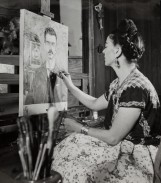 The third room, The Broken Body, displays photographs examining a central theme in Kahlo’s life and work, her serious physical injuries and her struggles with intense chronic pain. Kahlo contracted polio at age 6. As a result, her right leg was significantly thinner than her left. She often disguised this by wearing long skirts. In 1925, while she was a student in medical school, Kahlo was in a serious bus accident that left her with significant injuries, including multiple broken bones and internal injuries. These injuries made it impossible for her to bear children, a fact that haunted her for life. Over the course of 29 years, Kahlo endured 35 operations and suffered three miscarriages. She was frequently in intense pain and had to be bedridden or confined to a hospital for long periods.
The third room, The Broken Body, displays photographs examining a central theme in Kahlo’s life and work, her serious physical injuries and her struggles with intense chronic pain. Kahlo contracted polio at age 6. As a result, her right leg was significantly thinner than her left. She often disguised this by wearing long skirts. In 1925, while she was a student in medical school, Kahlo was in a serious bus accident that left her with significant injuries, including multiple broken bones and internal injuries. These injuries made it impossible for her to bear children, a fact that haunted her for life. Over the course of 29 years, Kahlo endured 35 operations and suffered three miscarriages. She was frequently in intense pain and had to be bedridden or confined to a hospital for long periods.
Kahlo began her career as an artist when she was in a body cast after her accident. Her mother designed a special easel for her and her father lent her paint and brushes. In addition to themes of national and sexual identity, her work often drew on images of bodily pain and expressed feelings of pain.
The fourth room of the exhibition is called Love and includes images of Kahlo’s family and friends, including her husband Diego and two of her male lovers. (The exhibition does not include any pictures of her known female lovers.) Cynthia Connelly, Artisphere’s Visual Arts Curator, is amazed by the incredible relationships Kahlo developed during her life.
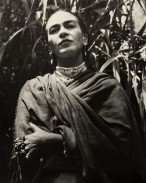 “When you walk through this room — and the entire exhibition — you get a sense of a really strong woman who surrounded herself with creative and challenging people,” Connelly says. “She lived a wonderful life and opened herself up to all kinds of ideas and experiences. She and Diego lived through so much history, but they were also creating history.”
“When you walk through this room — and the entire exhibition — you get a sense of a really strong woman who surrounded herself with creative and challenging people,” Connelly says. “She lived a wonderful life and opened herself up to all kinds of ideas and experiences. She and Diego lived through so much history, but they were also creating history.”
The fifth room, Photography, looks at the connection between Kahlo’s painting and her snapshot collection. Curator Ortiz traces several images, including a black cat and a dead baby, from Kahlo’s canvases back to their photographic origins. The sixth room, Diego’s Eyes, presents a series of photographs that directly and indirectly influenced Rivera’s huge political murals.
Connolly says those visiting the exhibition should be sure to read the photos’ descriptions, which contain a bounty of back story.
Each of the pictures is displayed with detailed information on the subject and artist (where they are known), date and media. In addition, Kahlo has left handwritten notes on the back of many of the snapshots, and in one case even left a lipstick print over an image of her husband Diego. Connolly also points out that the exhibit is a little like a mystery. “Each of the photographs fills in a little bit of her story,” she says, “but many of them bring up further questions and we can’t answer all of them for you. Pay attention to the details.”
These pictures also document an important moment in art history — the emergence of photography as a public art form. “In a time where almost everyone has a camera phone, we take photographs for granted,” Connolly says. “This was a time when photography was just coming into mass consumption. Snapshots were becoming less formal. Think about the kind of cameras being used and who processed the film.”
Given her skills in the darkroom, Kahlo may have developed many of them herself, though the photos shown at Artisphere are copies. Under the terms of Rivera’s will, the artifacts from Casa Azul are not allowed to leave Mexico. The local exhibition has been arranged in the same layout used by Monasterio in the original exhibition.
In addition to the historic photographs, the celebration of Frida Kahlo at Artisphere includes a variety of related events. There are two film series, one on women filmmakers (including Julie Taymor’s biopic “Frida” with Selma Hayek as the famous artist) and one featuring Robert Rodriguez; performances by flamenco artists, female salsa artists and the Mexican Institute of Sound; and hands-on workshops on surrealism.
Artisphere has produced this exhibition in collaboration with the Frida Kahlo Museum (Coyoacán, Mexico), Museo Diego Rivera Anahuacalli (Coyoacán, Mexico), the Embassy of Mexico, the Mexican Cultural Institute and Arlington County, with additional support from the Rosslyn Business Improvement District. This international collaboration was initially facilitated by the Arlington Sister City Association.
Theater
Round House explores serious issues related to privilege
‘A Jumping-Off Point’ is absorbing, timely, and funny
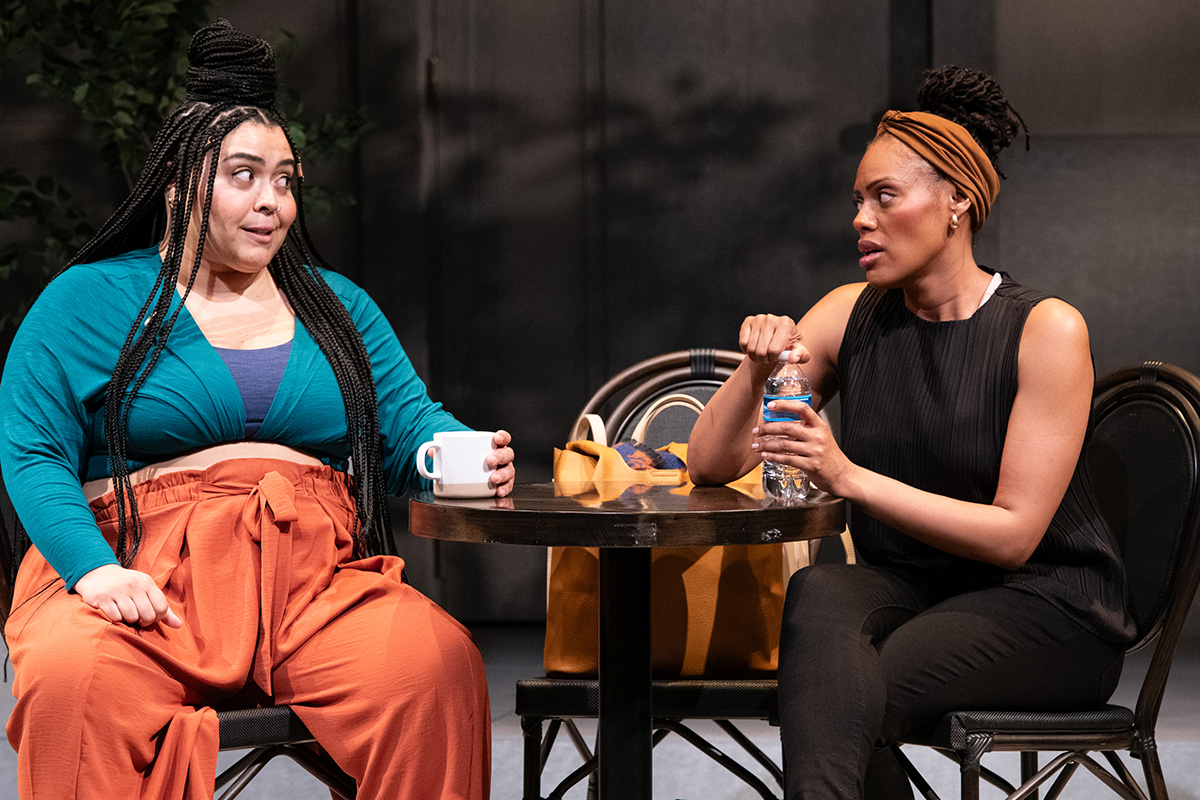
‘A Jumping-Off Point’
Through May 5
Round House Theatre
4545 East-West Highway, Bethesda, Md.
$46-$83
Roundhousetheatre.org
In Inda Craig-Galván’s new play “A Jumping-Off Point,” protagonist Leslie Wallace, a rising Black dramatist, believes strongly in writing about what you know. Clearly, Craig-Galván, a real-life successful Black playwright and television writer, adheres to the same maxim. Whether further details from the play are drawn from her life, is up for speculation.
Absorbing, timely, and often funny, the current Round House Theatre offering explores some serious issues surrounding privilege and who gets to write about what. Nimbly staged and acted by a pitch perfect cast, the play moves swiftly across what feels like familiar territory without being the least bit predictable.
After a tense wait, Leslie (Nikkole Salter) learns she’s been hired to be showrunner and head writer for a new HBO MAX prestige series. What ought to be a heady time for the ambitious young woman quickly goes sour when a white man bearing accusations shows up at her door.
The uninvited visitor is Andrew (Danny Gavigan), a fellow student from Leslie’s graduate playwriting program. The pair were never friends. In fact, he pressed all of her buttons without even trying. She views him as a lazy, advantaged guy destined to fail up, and finds his choosing to dramatize the African American Mississippi Delta experience especially annoying.
Since grad school, Leslie has had a play successfully produced in New York and now she’s on the cusp of making it big in Los Angeles while Andrew is bagging groceries at Ralph’s. (In fact, we’ll discover that he’s a held a series of wide-ranging temporary jobs, picking up a lot of information from each, a habit that will serve him later on, but I digress.)
Their conversation is awkward as Andrew’s demeanor shifts back and forth from stiltedly polite to borderline threatening. Eventually, he makes his point: Andrew claims that Leslie’s current success is entirely built on her having plagiarized his script.
This increasingly uncomfortable set-to is interrupted by Leslie’s wisecracking best friend and roommate Miriam who has a knack for making things worse before making them better. Deliciously played by Cristina Pitter (whose program bio describes them as “a queer multi-spirit Afro-indigenous artist, abolitionist, and alchemist”), Miriam is the perfect third character in Craig-Galván’s deftly balanced three-hander.
Cast members’ performances are layered. Salter’s Leslie is all charm, practicality, and controlled ambition, and Gavigan’s Andrew is an organic amalgam of vulnerable, goofy, and menacing. He’s terrific.
The 90-minute dramedy isn’t without some improbable narrative turns, but fortunately they lead to some interesting places where provoking questions are representation, entitlement, what constitutes plagiarism, etc. It’s all discussion-worthy topics, here pleasingly tempered with humor.
New York-based director Jade King Carroll skillfully helms the production. Scenes transition smoothly in large part due to a top-notch design team. Scenic designer Meghan Raham’s revolving set seamlessly goes from Leslie’s attractive apartment to smart cafes to an HBO writers’ room with the requisite long table and essential white board. Adding to the graceful storytelling are sound and lighting design by Michael Keck and Amith Chandrashaker, respectively.
The passage of time and circumstances are perceptively reflected in costume designer Moyenda Kulemeka’s sartorial choices: heels rise higher, baseball caps are doffed and jackets donned.
“A Jumping-Off Point” is the centerpiece of the third National Capital New Play Festival, an annual event celebrating new work by some of the country’s leading playwrights and newer voices.
Nightlife
Ed Bailey brings Secret Garden to Project GLOW festival
An LGBTQ-inclusive dance space at RFK this weekend
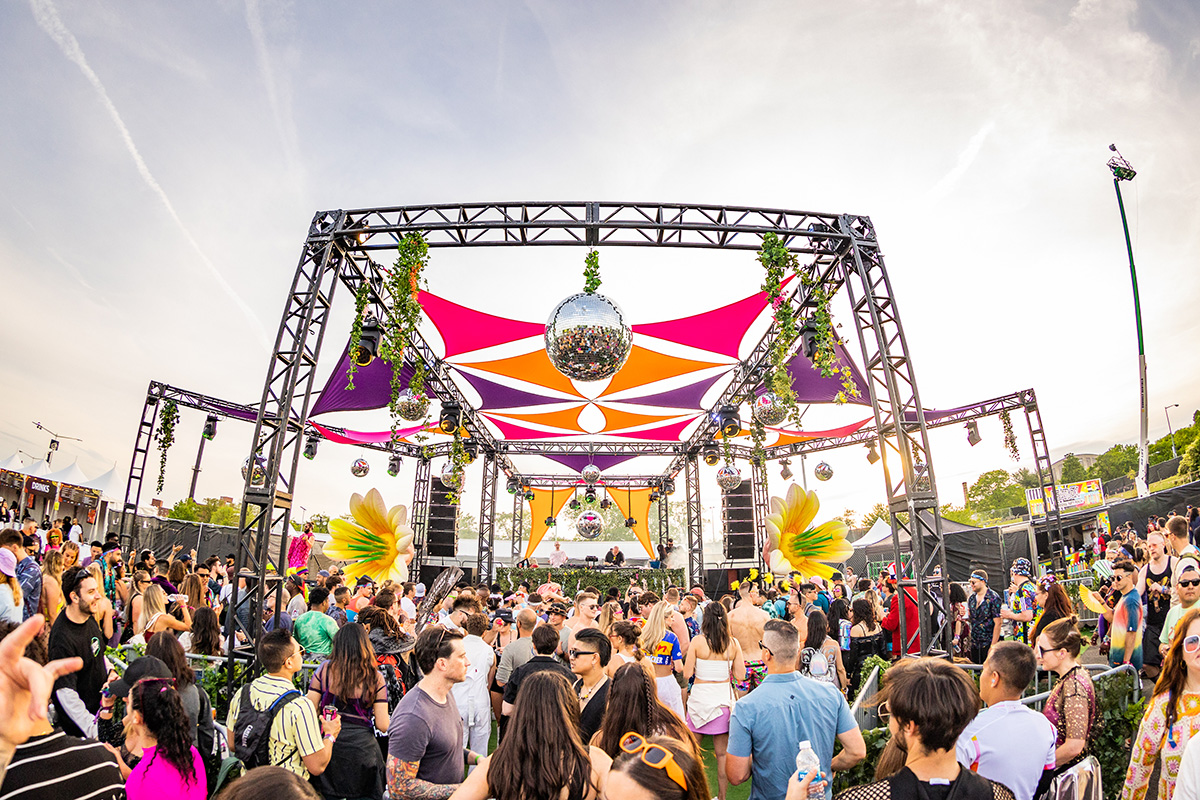
When does a garden GLOW? When it’s run by famed local gay DJ Ed Bailey.
This weekend, music festival Project GLOW at RFK Festival Grounds will feature Bailey’s brainchild the Secret Garden, a unique space just for the LGBTQ community that he launched in 2023.
While Project GLOW, running April 27-28, is a stage for massive electronic DJ sets in a large outdoor space, Secret Garden is more intimate, though no less adrenaline-forward. He’s bringing the nightclub to the festival. The garden is a dance area that complements the larger stages, but also stands on its own as a draw for festival-goers. Its focus is on DJs that have a presence and following in the LGBTQ audience world.
“The Secret Garden is a showcase for what LGBTQ nightlife, and nightclubs in general, are all about,” he says. “True club DJs playing club music for people that want to dance in a fun environment that is high energy and low stress. It’s the cool party inside the bigger party.”
Project GLOW launched in 2022. Bailey connected with the operators after the first event, and they discussed Bailey curating his own space for 2023. “They were very clear that they wanted me to lean into the vibrant LGBTQ nightlife of D.C. and allow that community to be very visibly a part of this area.”
Last year, club icon Kevin Aviance headlined the Secret Garden. The GLOW festival organizers loved the its energy from last year, and so asked Bailey to bring it back again, with an entire year to plan.
This year, Bailey says, he is “bringing in more D.C. nightlife legends.” Among those are DJ Sedrick, “a DJ and entertainer legend. He was a pivotal part of Tracks nightclub and is such a dynamic force of entertainment,” says Bailey. “I am excited for a whole new audience to be able to experience his very special brand of DJing!”
Also, this year brings in Illustrious Blacks, a worldwide DJ duo with roots in D.C.; and “house music legends” DJs Derrick Carter and DJ Spen.
Bailey is focusing on D.C.’s local talent, with a lineup including Diyanna Monet, Strikestone!, Dvonne, Baronhawk Poitier, THABLACKGOD, Get Face, Franxx, Baby Weight, and Flower Factory DJs KS, Joann Fabrixx, and PWRPUFF.
Secret Garden also brings in performers who meld music with dance, theater, and audience interactions for a multi-sensory experience.
Bailey is an owner of Trade and Number Nine, and was previously an owner of Town Danceboutique. Over the last 35 years, Bailey owned and operated more than 10 bars and clubs in D.C. He has an impressive resume, too. Since starting in 1987, he’s DJ’d across the world for parties and nightclubs large and intimate. He says that he opened “in concert for Kylie Minogue, DJed with Junior Vasquez, played giant 10,000-person events, and small underground parties.” He’s also held residencies at clubs in Atlanta, Miami, and here in D.C. at Tracks, Nation, and Town.
With Secret Garden, Bailey and GLOW aim to bring queer performers into the space not just for LGBTQ audiences, but for the entire music community to meet, learn about, and enjoy. While they might enjoy fandom among queer nightlife, this Garden is a platform for them to meet the entirety of GLOW festival goers.
Weekend-long Project GLOW brings in headliners and artists from EDM and electronic music, with big names like ILLENIUM, Zedd, and Rezz. In all, more than 50 artists will take the three stages at the third edition of Project GLOW, presented by Insomniac (Electric Daisy Carnival) and Club Glow (Echostage, Soundcheck).
Out & About
Washington Improv Theatre hosts ‘The Queeries’
Event to celebrate queer DMV talent and pop culture camp

The Washington Improv Theatre, along with the Mayor’s Office of LGBTQ Affairs and the Gay Men’s Chorus of Washington DC, will team up to host “The Queeries!” on Friday, April 26 at 9:30 p.m. at Studio Theatre.
The event will celebrate Queer DMV talent and pop culture camp. With a mixture of audience-submitted nominations and blatantly undemocratically declared winners, “The Queeries!” mimics LGBTQ life itself: unfair, but far more fun than the alternative.
The event will be co-hosted by Birdie and Butchie, who have invited some of their favorite bent winos, D.C. “D-listers,” former Senate staffers, and other stars to sashay down the lavender carpet for the selfie-strewn party of the year.
Tickets are just $15 and can be purchased on WITV’s website.
-

 State Department3 days ago
State Department3 days agoState Department releases annual human rights report
-

 South America1 day ago
South America1 day agoArgentina government dismisses transgender public sector employees
-

 District of Columbia1 day ago
District of Columbia1 day agoCatching up with the asexuals and aromantics of D.C.
-

 Politics4 days ago
Politics4 days agoSmithsonian staff concerned about future of LGBTQ programming amid GOP scrutiny

